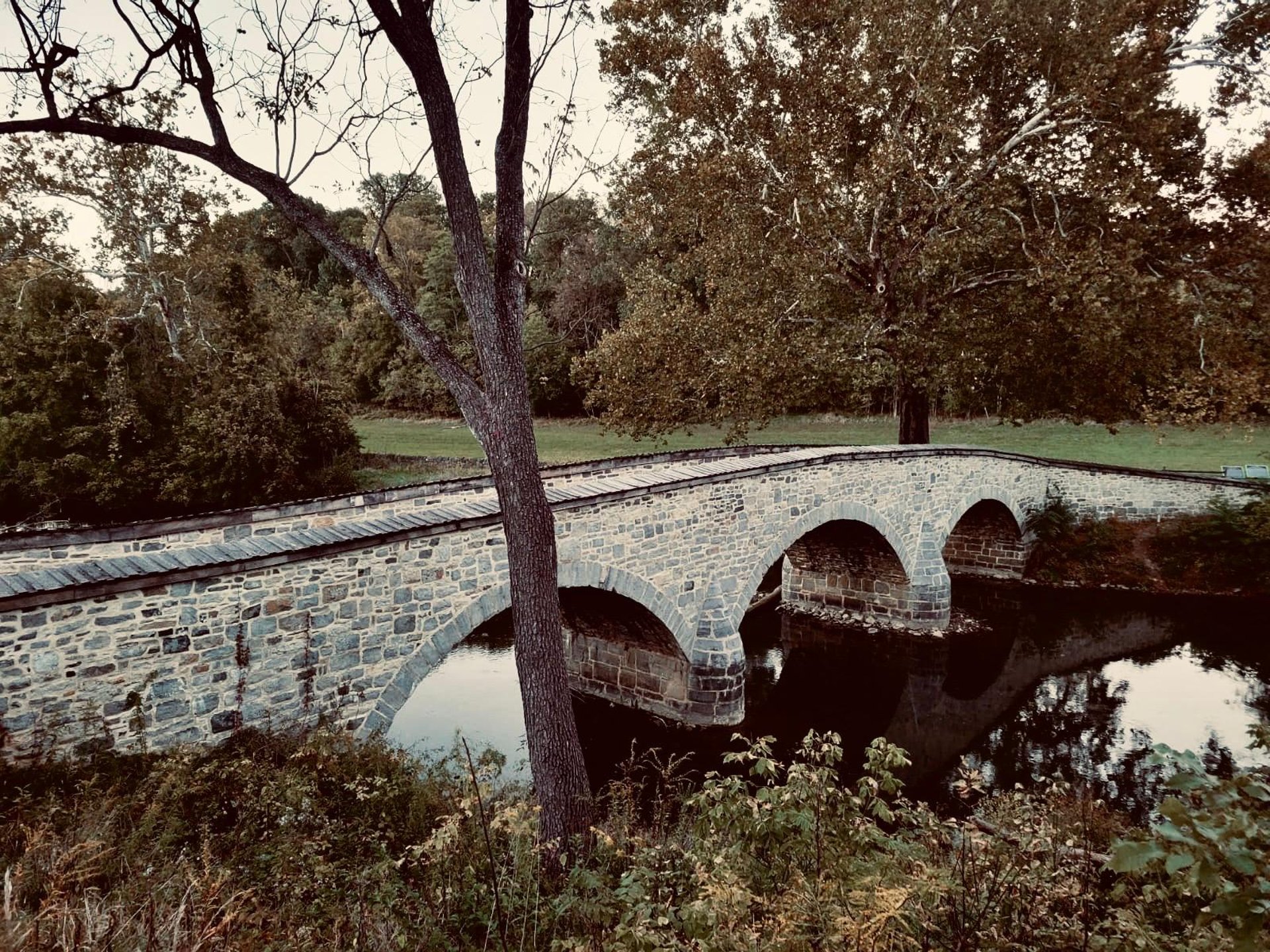
In Our Time
Blood on Burnside Bridge
CONTEMPLATION
A few months ago, I visited the battlefield of Antietam.
Antietam Creek marks the location of the bloodiest one-day battle of the American Civil War. A humble bridge arches over the flowing water, connecting the two banks. I stop in the middle. Burnside Bridge, they call it; a landmark worth dying for. Wave after wave of Union forces had stormed that bridge. Volleys of gunfire stained their blue uniforms dark red as the bodies piled up. My gaze follows the far end of the bridge and up the steep incline of a grassy hill. If I had been standing here 59,102 days earlier, I would now be staring down the barrel of 500 Confederate rifles. Chills.
To my right is a tree. A proud oak, I think to myself. I take a closer look. There is also a picture. It dates back to the 1860s. It depicts that very same tree, albeit a bit less proud. Beside it stands a soldier, hungry and scared. His eyes are empty. I see only death.
He is my age.
I find it interesting how we view time.
Time is constant. As the earth circles the sun, we watch it rise and set. And then it repeats.
Yet, we seem to have this need to categorize things to make them more understandable. Maybe some matters are too large for our human minds to grasp. And we do this with time; we place it in different cubbies.
We speak of the Renaissance and Victorian eras, the Middle Ages, and the Neolithic period.
We use years to keep large timespans in perspective. We say approximately 2,350 years ago, Alexander the Great defeated Darius’ Persians in the Battle of Issus; nearly 250 years ago, the United States' founding fathers declared independence from England.
I find that thinking like this helps us understand how long ago it was that decisive moments in history occured; but at the same time, it builds a wall between moments in history and us.
But also, I feel like it estranges us from the past.
It makes us think that people were different back then and that the world was different.
We hear of the Bubonic Plague or the Hundred Years’ War and think, ‘Well, they were living in what we now call the Middle Ages. It makes sense that it was like that back then, but we are now in modern times.’
Is there truly this wall that divides us from our past?
What is it that really separates us from history?
Only days.
The earth circles the sun. We watch it rise and set. And then it repeats.
One day, Julius Caesar conquers Gaul, and then days pass. World War II breaks out, and then days pass, and I am born.
It is just day after day after day, one continuous string of time. And everyone has lived their lives just as we do today.
We tread the same ground as farmers of the 16th century, we have the same thoughts as businessmen in the Byzantine Empire, and we are the same people we have always been: trying to figure out life, getting caught up in minor occurrences, all while being pushed around by the tides of history.
When we say we can ‘learn from history’, it is because those who have been immortalized in the annals of time are our forefathers.
Those who left their mark on the same ground we walk, are connected to us through the rising and setting of the sun and the passing of days.
Those who lived their lives and not once had their name etched in stone, those who faced questions of morality and virtue, honor and survival… they are us.
I think back to that picture by the tree at Burnside Bridge.
That soldier was no different than me. Nothing separates us, no historical era or ages, no empires or kingdoms.
Only days lie between us.
And we are both just men living in our time.

